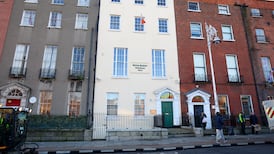In or around 1518, a daughter was born to John Hardwicke, of Hardwicke, Derbyshire; she was named Elizabeth. At the age of 14, Bess was married to Richard Barlow, but young Richard, no older than his bride, died before the marriage could be consummated.
Later Elizabeth married Sir William Cavendish, and having survived this Sir William, Bess went on to marry yet another, this time Sir William St Loe. On the latter's death she married, finally, George Talbot, sixth earl of Shrewsbury. Bess had an eye for a good bargain. She had inherited considerable wealth from her father and subsequently, with each of her marriages, made good settlements, so that before she died she was accounted the wealthiest woman in England. And despite her many husbands and the titles she acquired, she was always popularly known as Bess of Hardwicke.
Bess is chiefly remembered on two grounds. Firstly, in 1569 her husband, Lord Shrewsbury, was appointed by Queen Elizabeth I to be custodian-gaoler of Mary, Queen of Scots.
Bess was much in contact with the troubled captive queen, and made of her something of a confidante; she repeated to Mary all the gossip of the time, much of it graphically suggesting that the Virgin Queen, Elizabeth, was no longer, and had not been for many years, deserving of the sobriquet - and names were named.
Some time later, no doubt in order to further her own dynastic and political ambitions, Mary wrote a lengthy letter to Elizabeth in which she repeated, almost word for word, the stories Bess had told her. Although never sent, it was subsequently found, and Bess of Hardwicke had much explaining to do before the queen and council. But Bess, resourceful woman that the was, survived. Bess's other claim to fame explains why she was known in her time as "Building Bess of Hardwicke". It is said that as she advanced in years, Bess consulted a fortune-teller who told her that she need have no fear of dying as long a she continued building. So Bess continued - completing a succession of mansions at Hardwicke, Bolsover, Oldcotes, Worksop and Chatsworth, and several others extant as proud examples of the stately homes of England. But then came the winter of 1607-08. It was cold and harsh, with a long, uninterrupted frost, and the builders' labourers were no longer able to continue with their work.
They tried in vain even to mix the mortar with hot ale, but the cold was too severe. And as foretold, before any building could resume, Bess of Hardwicke died on February 13th, 1608 - 393 years ago today.







